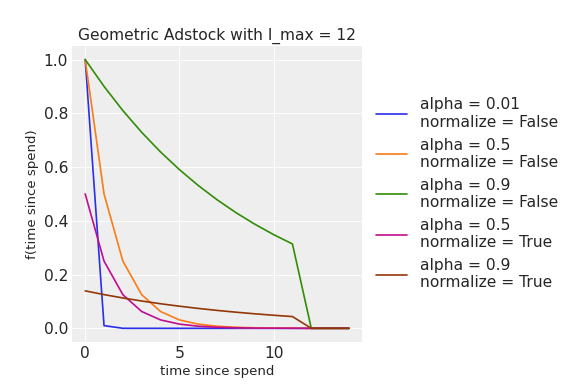geometric_adstock#
- pymc_marketing.mmm.transformers.geometric_adstock(x, alpha=0.0, l_max=12, normalize=False, axis=0)[source]#
Geometric adstock transformation.
Adstock with geometric decay assumes advertising effect peaks at the same time period as ad exposure. The cumulative media effect is a weighted average of media spend in the current time-period (e.g. week) and previous
l_max- 1 periods (e.g. weeks).l_maxis the maximum duration of carryover effect.(
Source code,png,hires.png,pdf)
- Parameters:
x (tensor) – Input tensor.
alpha (float, by default 0.0) – Retention rate of ad effect. Must be between 0 and 1.
l_max (int, by default 12) – Maximum duration of carryover effect.
normalize (bool, by default False) – Whether to normalize the weights.
- Returns:
Transformed tensor.
- Return type:
tensor
References
